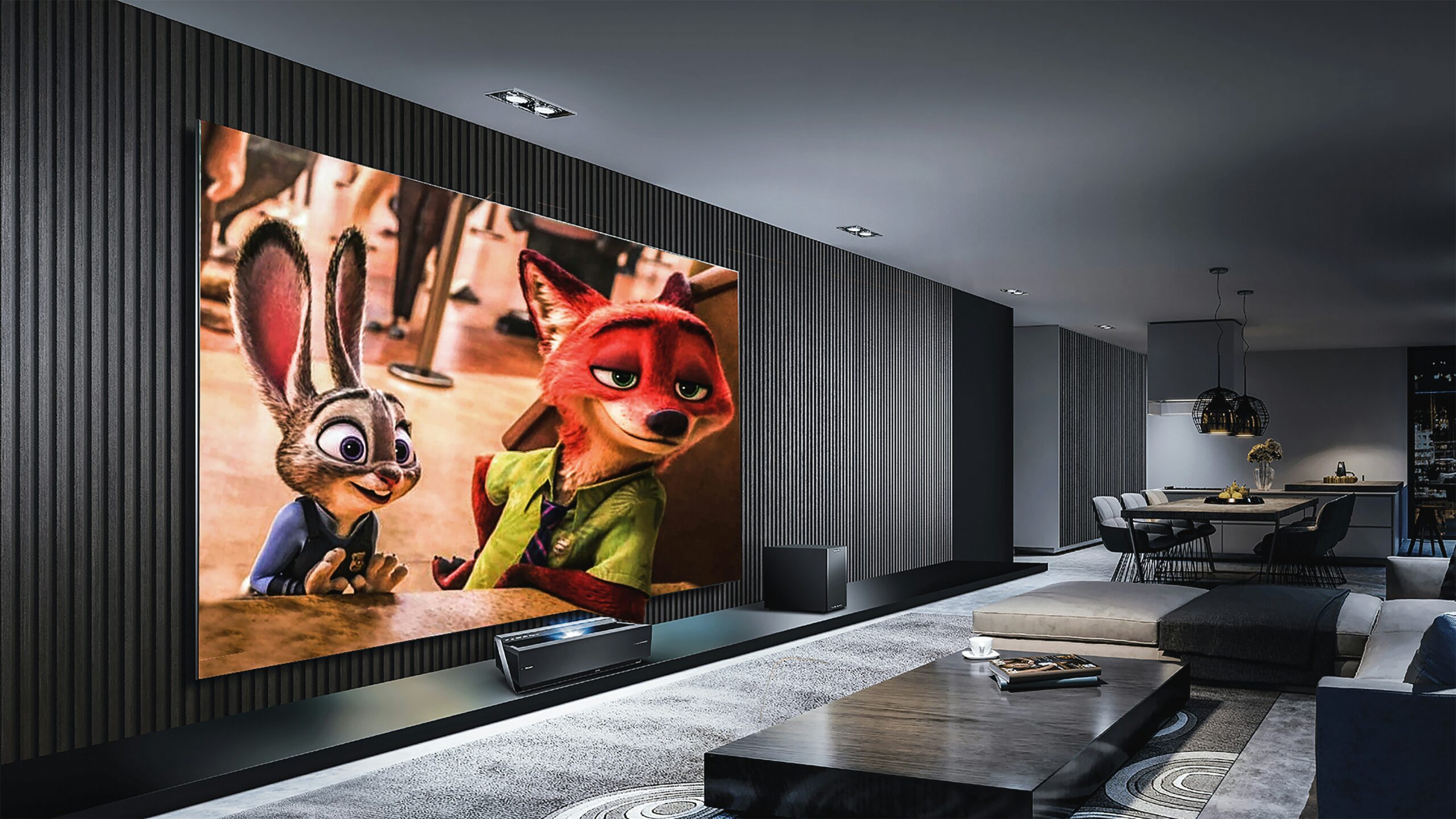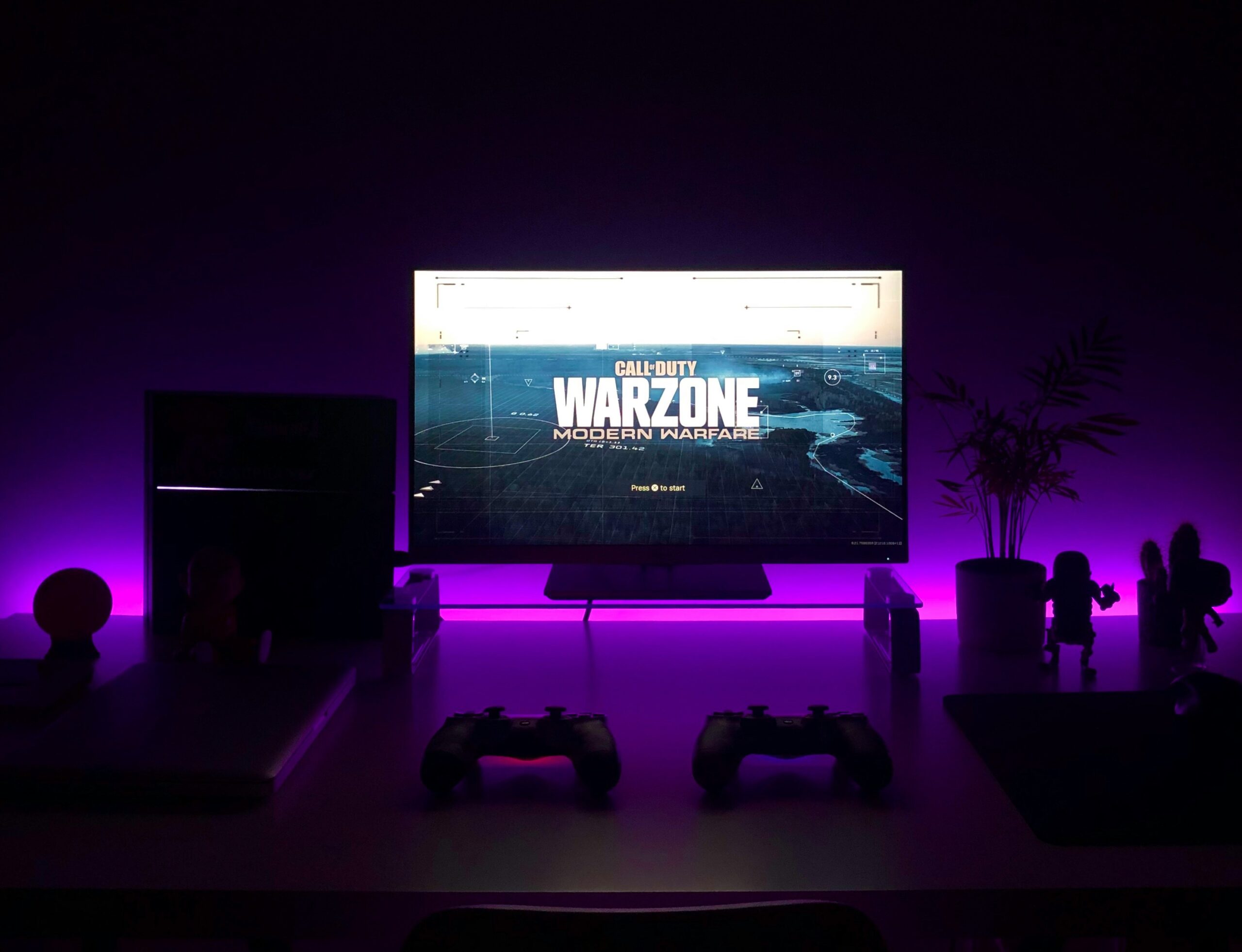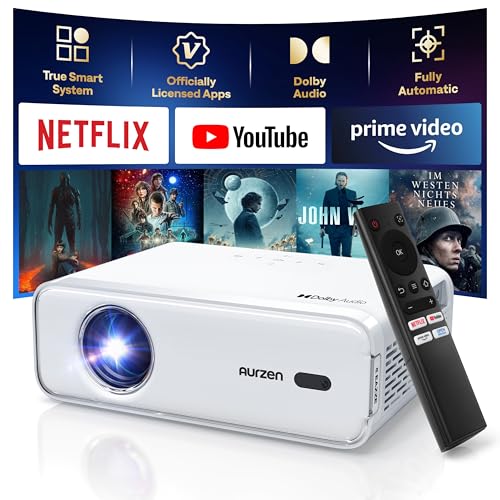
Introduction to Home Theater Systems
The concept of home theater systems has gained significant traction in recent years, transforming ordinary living spaces into immersive entertainment environments. With advancements in technology and the increasing accessibility of high-quality audiovisual equipment, more homeowners are seeking to replicate the cinematic experience within the comfort of their own homes. The appeal of a home theater lies not only in providing an unparalleled viewing experience but also in the convenience it offers—no need to trek to the local cinema when blockbuster films can be enjoyed from one’s own couch.
A home theater system typically comprises several essential components that work in harmony to deliver an engaging audiovisual experience. At the forefront is the display device, often a beamer or projector, which allows for large-scale images that can emulate the grandeur of a movie theater screen. The choice of a beamer is critical, as it influences the quality of visuals available during film screenings, gaming sessions, or even everyday television viewing. A good projector offers bright, high-definition images that can effortlessly capture the details and colors of the content being viewed.
Complementing the beamer are audio components that are instrumental in creating a rich sound environment. These may include surround sound speakers or a dedicated home theater sound system designed to enhance auditory experiences, offering sounds that envelop viewers and pull them into the experience. Additionally, sources such as streaming devices, Blu-ray players, and gaming consoles play a crucial role in delivering high-quality content to the system. Overall, the enjoyment derived from a well-curated home theater system represents a thoughtful blend of quality video and sound, featuring a carefully selected beamer that aligns with individual preferences and space requirements.
Understanding Different Types of Beamers
When embarking on the journey to create the ultimate home theater setup, one of the crucial decisions involves selecting the right beamer. The market offers a variety of options, primarily categorized into three major technologies: Digital Light Processing (DLP), Liquid Crystal Display (LCD), and Liquid Crystal on Silicon (LCoS). Each type possesses distinct characteristics, advantages, and disadvantages that cater to different viewing preferences.
DLP beamers utilize a digital micromirror device, which reflects light to create images. One of their primary advantages is the capability to produce high-contrast images due to the rapid sequence of color projections, leading to vibrant colors and sharp details. DLP beamers are typically compact, making them an excellent option for users with limited space. However, they may suffer from the “rainbow effect,” a phenomenon wherein users perceive a brief flash of color when viewing high-contrast scenes. This effect can be distracting for some viewers, particularly when watching fast-moving graphics.
On the other hand, LCD beamers employ liquid crystal panels to project images. This technology is recognized for delivering superior color accuracy and brightness. The advantages of LCD beamers include a rich color palette and excellent image quality, making them suitable for well-lit environments. However, they often have a lower contrast ratio compared to DLP counterparts, which can diminish performance in darker settings. Additionally, LCD models may experience issues with pixelation, particularly in lower-resolution models.
Lastly, LCoS beamers effectively combine the best aspects of both DLP and LCD technologies. They provide exceptional color accuracy and high contrast ratios, resulting in impressive image quality. While LCoS models can be more expensive, their capability to render finer details makes them an attractive choice for cinephiles seeking the best possible home theater experience. Nevertheless, they do tend to be bulkier and less portable compared to DLP options.
Understanding these distinct types of beamers is essential when evaluating which technology aligns best with your home theater objectives. Each option offers unique features that can enhance your viewing experience, depending on factors like viewing environment and content preferences.
Key Features to Look for in a Beamer
When selecting a beamer for your home theater setup, several critical features warrant consideration to ensure optimal viewing experiences. Among these, resolution stands out significantly. The resolution of a beamer can impact the sharpness and clarity of the images projected. Common options include HD (1080p) and 4K resolutions, with 4K increasingly becoming the standard for high-definition viewing. A higher resolution enables a more detailed presentation, especially beneficial when projecting larger images, as finer details contribute to overall picture quality.
Another essential factor is brightness, measured in lumens. The lumen rating of a beamer dictates its ability to project images in various lighting conditions. A higher lumen count is crucial for environments with less controlled lighting, ensuring images remain clear and vibrant. For home theaters that may not always be dark, opting for a beamer with at least 2,500 lumens can significantly enhance visibility during daytime viewings.
Contrast ratio is equally critical in assessing a beamer’s performance. It refers to the difference between the darkest and brightest parts of an image. A higher contrast ratio leads to deeper blacks and brighter whites, creating a more dynamic image quality. This feature is particularly important for those who enjoy watching films or playing video games where image depth can affect overall immersion.
Lastly, throw distance is an often-overlooked characteristic that determines how far the beamer must be positioned from the screen to achieve an appropriate image size. Depending on your room’s dimensions, it is pertinent to select a beamer that matches your available space without compromising on image quality.
Best Brands and Models of Beamers
When it comes to setting up the perfect home theater, selecting a reliable beamer is crucial. With a variety of brands available, individuals can find models to suit various budgets and preferences. Among the most respected brands in the projector market are Epson, BenQ, Sony, and Optoma. Each of these manufacturers offers unique features that cater to different viewing needs.
Epson has consistently been a market leader, known for its wide range of models. The Epson Home Cinema 2150, for instance, features 1080p resolution, an impressive 2,500 lumens brightness, and wireless connectivity, making it ideal for both movies and gaming. Additionally, user reviews praise its excellent color accuracy and easy setup.
BenQ is another prominent player, often favored for its DLP technology, which provides vibrant color and sharp image quality. The BenQ HT2050A is particularly popular among home cinema enthusiasts, offering 1080p resolution, 2,200 lumens of brightness, and low input lag, ensuring an immersive experience, especially for gamers.
Sony is synonymous with high-quality visuals, and models such as the Sony VPL-HW45ES deliver stunning 1080p images with advanced motion handling capabilities. This beamer is especially recommended for those who prioritize cinematic quality. Users consistently highlight its superior build quality and rich colors.
For those looking for a more budget-friendly option, Optoma offers impressive projectors such as the Optoma HD146X. It boasts a brightness of 3,600 lumens and a 1080p resolution, making it an excellent choice for bright rooms. Reviewers commend this model for its value, noting it achieves a balance between performance and cost.
With these exemplary brands and models, individuals can confidently choose a beamer that meets their home theater goals, ensuring that their viewing experience is nothing short of spectacular.
Room Setup and Projection Considerations
When creating the ultimate home theater experience, the room layout and projection considerations play a pivotal role in achieving optimal performance. The arrangement of seating should facilitate an unobstructed view of the screen while ensuring comfort for all viewers. Typically, the ideal seating distance from the screen is between 1.5 to 2.5 times the diagonal size of the screen. This distance not only enhances the viewing experience but also minimizes eye strain during prolonged viewing sessions.
Screen size is another critical factor that influences the overall experience. A larger screen often creates a more immersive environment, but it must be appropriately matched to the room’s dimensions. For instance, if space permits, a screen size of 100 inches or more can offer a theatrical feel, but this should also be balanced with viewing distance to avoid distortion or discomfort. Additionally, the screen’s aspect ratio should be considered to accommodate various media formats, such as widescreen television formats or cinema releases.
Ambient light control is essential in enhancing the quality of the projected image. Ideally, the room should be equipped with blackout curtains or shades to minimize external light interference. When possible, eliminating reflections from windows or other light sources will improve the perceived contrast and color representation. Furthermore, consider the placement of the projector carefully. The location should allow for a clear line of sight to the screen and be positioned at an appropriate height and distance to prevent keystoning, which can distort the image. A ceiling-mounted projector is often advantageous, as it maximizes floor space while ensuring the projector remains out of reach from potential obstructions.
In conclusion, optimal room setup is vital to establishing a home theater that delivers an exceptional viewing experience. By thoughtfully considering seating arrangements, screen size, ambient light control, and projector placement, one can create a cohesive environment that greatly enhances entertainment enjoyment.
Connecting and Configuring Your Beamer
Establishing an optimal home theater setup requires careful consideration when connecting and configuring your beamer. The initial step involves identifying the appropriate connections to integrate your beamer with various devices, such as sound systems, Blu-ray players, and streaming devices. Most beamers come equipped with multiple input ports, including HDMI, VGA, and sometimes USB. Connecting through HDMI is typically preferred, as it allows for both high-definition video and audio transmission, thus simplifying wiring and enhancing overall performance.
After physically connecting your beamer to your devices, proceed to power on all components. It’s important to ensure that the correct input source is selected on your beamer; this is often done via the remote control or the on-device menu. For Blu-ray players, ensure that the video output is set to match your beamer’s native resolution for the best visual fidelity.
Next, attention must be given to audio configurations. If utilizing an external sound system, such as a soundbar or surround sound speakers, connect these devices to the beamer or directly to the video source if it supports audio pass-through. Some modern beamers come equipped with Bluetooth capabilities, allowing you to pair with wireless speakers, enhancing your home theater experience.
Following successful connections, focus on configuring the beamer settings. Adjust parameters such as brightness, contrast, and color temperature to achieve optimal image quality based on your viewing environment. Many beamers feature preset modes tailored for specific content types—movies, presentations, or gaming—allowing for a quick configuration to suit your needs. Additionally, consider fine-tuning aspects like keystone correction and lens shift to ensure distortion-free images, essential for a truly immersive home theater experience.

Enhancing the Home Theater Experience
Creating an immersive home theater experience goes beyond selecting a high-quality beamer. A well-rounded setup includes a thoughtfully chosen sound system, optimal seating arrangements, suitable lighting, and appealing décor to enhance the overall atmosphere. Each of these elements plays a crucial role in bringing the cinematic experience to life within the comfort of one’s home.
To begin with, investing in a robust sound system is paramount. While many projectors come with built-in speakers, they often fail to deliver the depth and clarity required for an authentic movie experience. A surround sound system, for instance, can significantly enhance the audio quality, allowing viewers to feel enveloped by the film. Brands like Dolby Atmos or DTS:X provide advanced acoustic technologies that can transform a simple movie night into a thrilling adventure.
Equally important is the arrangement of seating. A carefully considered layout not only maximizes comfort but also ensures that everyone in the room enjoys an unobstructed view of the screen. It is advisable to place seating at a distance that complements the projector’s throw distance, which can help in avoiding any strain on the eyes. Additionally, incorporating recliner chairs or comfortable sofas enhances relaxation, making viewers more likely to engage in the film.
Lighting also plays a vital role in setting the mood. Dimming the lights to a suitable level can help to create a more cinematic environment, as excessive light can wash out the projector’s output. For this, LED strip lights or smart lighting solutions can be utilized to provide adjustable brightness levels. Moreover, blackout curtains can further minimize external light distractions.
Lastly, the décor should reflect a cinematic theme, contributing to the overall experience. Movie posters, themed artwork, or even acoustic panels can enhance the aesthetic appeal while improving sound quality. By combining these elements thoughtfully, one can successfully transform a room into a private cinema that rivals commercial theaters, ensuring an unforgettable viewing experience.
Common Setup Mistakes to Avoid
Creating an ideal home theater setup is a meticulous task that often leads individuals to encounter various pitfalls. One common mistake is improper projector placement. Positioning the projector too close to the screen can result in a distorted image, while placing it too far can lead to a dim display. To mitigate this issue, it is crucial to consult the projector’s manual for the recommended throw distance, ensuring the projector is optimally situated within the room.
Another prevalent error revolves around screen size selection. Home theater enthusiasts frequently underestimate the importance of appropriate screen dimensions, which can dramatically affect the viewing experience. A screen that is too small can strain viewers’ eyes, while an overly large screen in a confined space can overwhelm the viewer and hinder the overall immersion. The gold standard is to choose a screen size that complements the room’s dimensions and seating distance, typically aiming for a diagonal screen size that is one-third the distance from the screen to the main seating area.
Moreover, neglecting sound quality is a significant oversight that can compromise the entire viewing experience. Relying solely on the projector’s built-in speakers often results in subpar audio quality, failing to match the cinematic visuals. To enhance sound fidelity, it is advisable to invest in a surround sound system or quality soundbar. Additionally, positioning speakers thoughtfully can greatly improve audio immersion. This could mean placing speakers at ear level and ensuring they are oriented towards the viewer for an optimal sound experience.
By paying careful attention to projector placement, appropriate screen sizes, and sound quality, enthusiasts can transform their home theater into a captivating audiovisual environment. Implementing these strategies will help to avoid the common mistakes that can detract from the overall enjoyment of watching movies at home.
Conclusion
In conclusion, creating the perfect beamer setup is a formidable yet rewarding endeavor for any home theater enthusiast. Throughout this guide, we have explored the essential elements to consider when selecting a beamer, including resolution, brightness, and sound quality, all of which play a critical role in determining the overall viewing experience. Understanding the importance of these features allows one to make informed decisions that best suit individual preferences and room specifications.
Additionally, we have emphasized the value of placement and screen size, as these factors significantly influence the immersive quality of your home theater. The right distance between the beamer and the screen can help avoid blurriness and maximize the viewing area while maintaining comfort for viewers. Furthermore, considering the investment in additional audio equipment can enhance the overall experience, ensuring that sound and picture quality are in harmony, providing an authentic cinematic feel at home.
It is essential to remember that the ultimate goal is to create an atmosphere that combines convenience with high-quality entertainment. Whether one opts for a compact model for limited spaces or a high-end projector for a larger setup, optimizing the environmental conditions, such as lighting and wall color, can elevate the experience further. As potential home theater owners, evaluating personal needs against the guide’s recommendations can lead to a more satisfying choice.
We hope this guide has equipped you with the knowledge necessary to embark on your journey toward building an exceptional home theater. By implementing the insights shared, you will be well on your way to enjoying the unique pleasures that come from an ideal beamer setup. Embrace the process, and soon, you will be reaping the rewards of countless cinematic evenings in the comfort of your own home.

![[Electric Focus] 4K Support Projector with WiFi6 and Bluetooth 5....](https://m.media-amazon.com/images/I/51mO30Bev2L.jpg)



![[1000 ANSI/Auto Focus] 4K Home Theater Projector with WiFi 6 and ...](https://m.media-amazon.com/images/I/51q5w8uaeLL.jpg)
